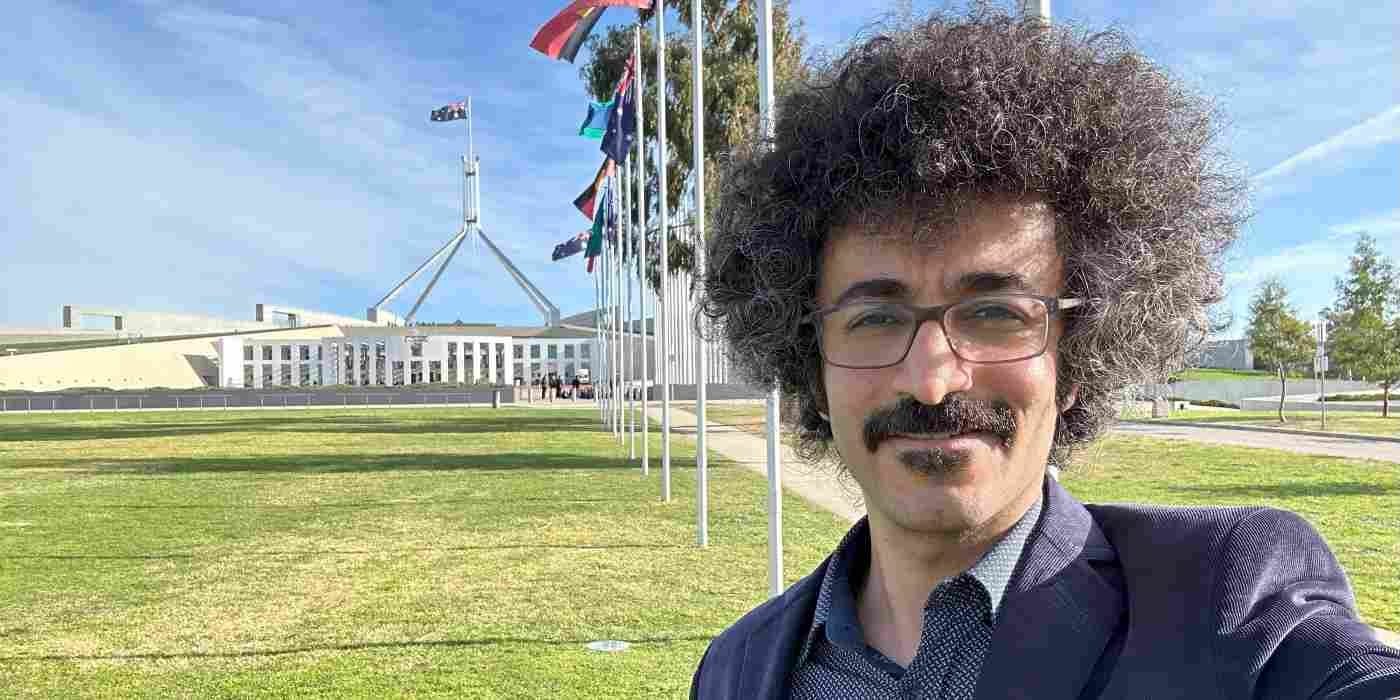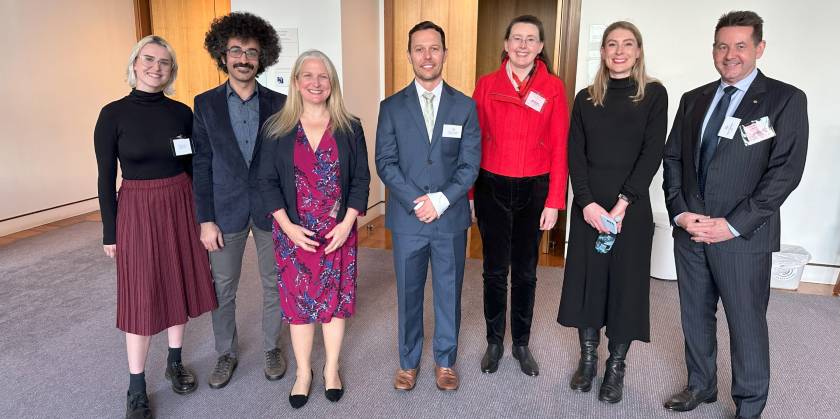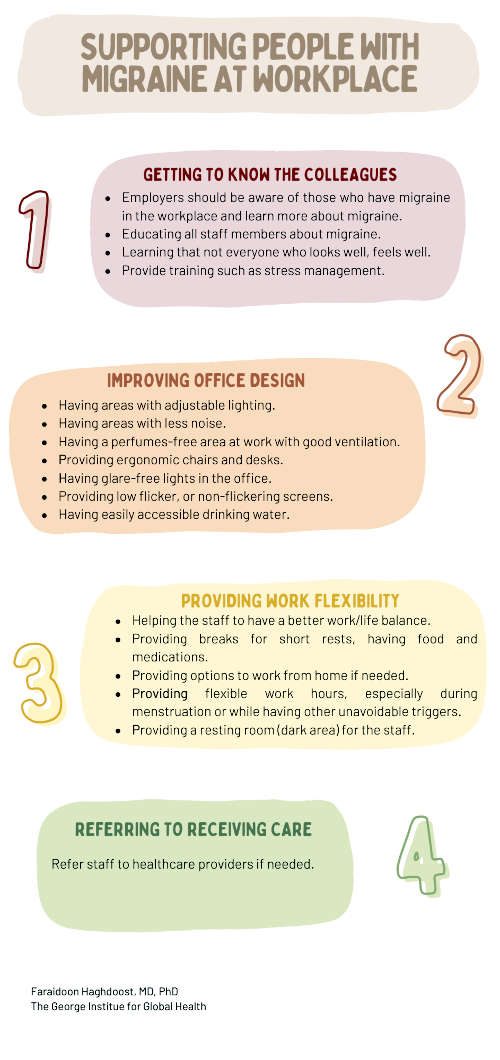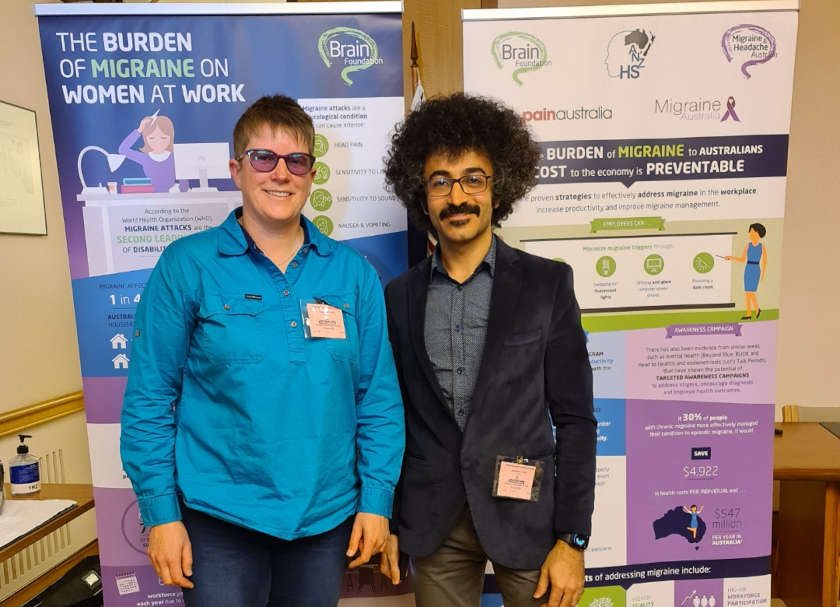
Migraine in the workplace: advocating for change and support
I was very pleased to be invited as a researcher in the field of headache disorders to a recent meeting called “Keeping women with migraine in the workforce” organised by the Brain Foundation at Parliament House in Canberra. When I left home, I was going over what I already knew about the issue, but on the way back to Sydney, all I could think about was the powerful testimonies from the speakers on the incredible damage migraine had inflicted on their lives. As Fiona Jeffery put it:
“I’m living evidence that migraine can take everything from you no matter how fit you are, no matter how mentally tough you are, and no matter how hard you fight to recover.”
There are more than five million Australians with migraine and the annual cost is estimated to be over $35 billion. In their remarks, Drs. Bronwyn Jenkins, Emma Foster and Elspeth Hutton underlined the significance of further research on migraine and raising awareness, noting that migraine is more than just a headache. Fiona explained that on top of the crippling pain caused by migraine, sufferers also have the added burden of having to prove their illness in the workplace while feeling so unwell.

From left Anniek Grundy, Faraidoon Haghdoost, Bronwyn Jenkins, Carl Cincinnato, Elspeth Hutton, Emma Foster and Trevor Thompson
Fiona added, “When my migraine attacks became chronic, I vomited multiple times each day for more than eight months. I vomited out the door of the car on arriving at work, from my bed in the middle of the night, on a conference call in my boss’s office, in my office bin as I was pushed in a wheelchair out of my work building”.
We also heard from Peta Murphy and Bridget Archer, Co-chairs of the Parliamentary Friends of Women's Health group, and Assistant Minister for Health and Aged Care, Ged Kearney, who explored what people with migraine need in the workplace. It was amazing to see the support from them and how passionate they were about helping.
Fiona Jeffery and Faraidoon Haghdoost
“Unfortunately, the modern workplace is a minefield of migraine triggers,” said Fiona. “My triggers include light and glare, screens and flickering movement, odour (from perfume or aftershave or cleaning products), noise, and motion (such as car travel). Without broader support and understanding beyond my immediate team, eventually, my only option was to access income protection and hope that I would be able to heal sufficiently to return to work.”
Carl Cincinnato, director of operations at the Brain Foundation, mentioned that most workplaces are unaware that migraine might be a problem. HR directors regularly say that no one complains about migraine. However, because people are afraid of discrimination and stigma, few disclose that they get migraine. That makes sense given that, according to research, four out of five managers do not believe that migraine is a serious enough condition to warrant time away from work.
“I would love to be back at work,” said Fiona. “The intellectual challenge, social interaction and financial benefit that comes from work is incredibly important. Unfortunately, I’ve come to the conclusion that the only way I will be able to return to work is to have my own business, which will allow me to control my work environment to the maximum extent possible.”
Carl highlighted that women are already fighting for equal pay and greater equity in the workplace, and migraine should not be yet another barrier to career success.
So, what should be done? Many of the speakers talked about the importance of increasing awareness and education, improving office designs and providing greater work flexibility. There was a call for advocates, academic institutions, businesses, professionals and individuals to help achieve these steps towards making workplaces more migraine-friendly. Additionally, utilising awareness and educational employer programs will facilitate the process.
“There are many Australian women like me living with migraine, who want to work, but need more support and accommodations to remain in the workplace,” Fiona continued. “I hope that speaking here today will result in meaningful change for other Australian women still struggling with migraine at work.”
While listening to Fiona, I remembered that she was not alone. Three out of every four people with migraine are female and there are about 300,000 to 400,000 Australians with migraine disease who experience more than 15 days of headache in a month.
For my part, the meeting was a timely reminder of how much work needs to be done in this area to improve the lives of people with migraine disease. Hopefully, we can all play our part in creating a more inclusive and understanding workplace environment for those with this condition. This means doing more research, advocating for policy changes, increasing employer awareness, and fostering a culture where health issues like migraine are acknowledged and accommodated. The ultimate goal is to ensure that no one is forced to choose between their health and their career. In conclusion, the fight against migraine in the workplace is not just about healthcare; it's about human rights, equality, and social justice.







